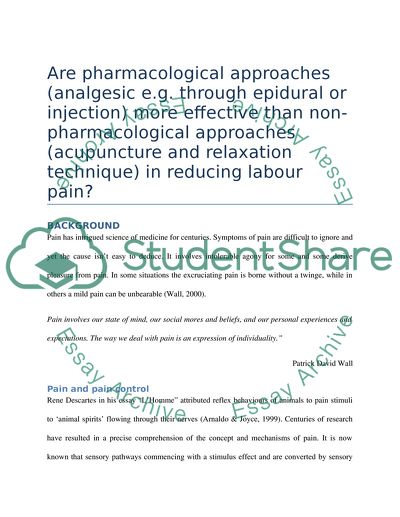Cite this document
(Pharmacological and Non-pharmacological Approaches to Reduce Labor Research Paper, n.d.)
Pharmacological and Non-pharmacological Approaches to Reduce Labor Research Paper. Retrieved from https://studentshare.org/health-sciences-medicine/1758068-compare-pharmacological-and-non-pharmacological-approaches-to-reduce-labour-pain
Pharmacological and Non-pharmacological Approaches to Reduce Labor Research Paper. Retrieved from https://studentshare.org/health-sciences-medicine/1758068-compare-pharmacological-and-non-pharmacological-approaches-to-reduce-labour-pain
(Pharmacological and Non-Pharmacological Approaches to Reduce Labor Research Paper)
Pharmacological and Non-Pharmacological Approaches to Reduce Labor Research Paper. https://studentshare.org/health-sciences-medicine/1758068-compare-pharmacological-and-non-pharmacological-approaches-to-reduce-labour-pain.
Pharmacological and Non-Pharmacological Approaches to Reduce Labor Research Paper. https://studentshare.org/health-sciences-medicine/1758068-compare-pharmacological-and-non-pharmacological-approaches-to-reduce-labour-pain.
“Pharmacological and Non-Pharmacological Approaches to Reduce Labor Research Paper”, n.d. https://studentshare.org/health-sciences-medicine/1758068-compare-pharmacological-and-non-pharmacological-approaches-to-reduce-labour-pain.


